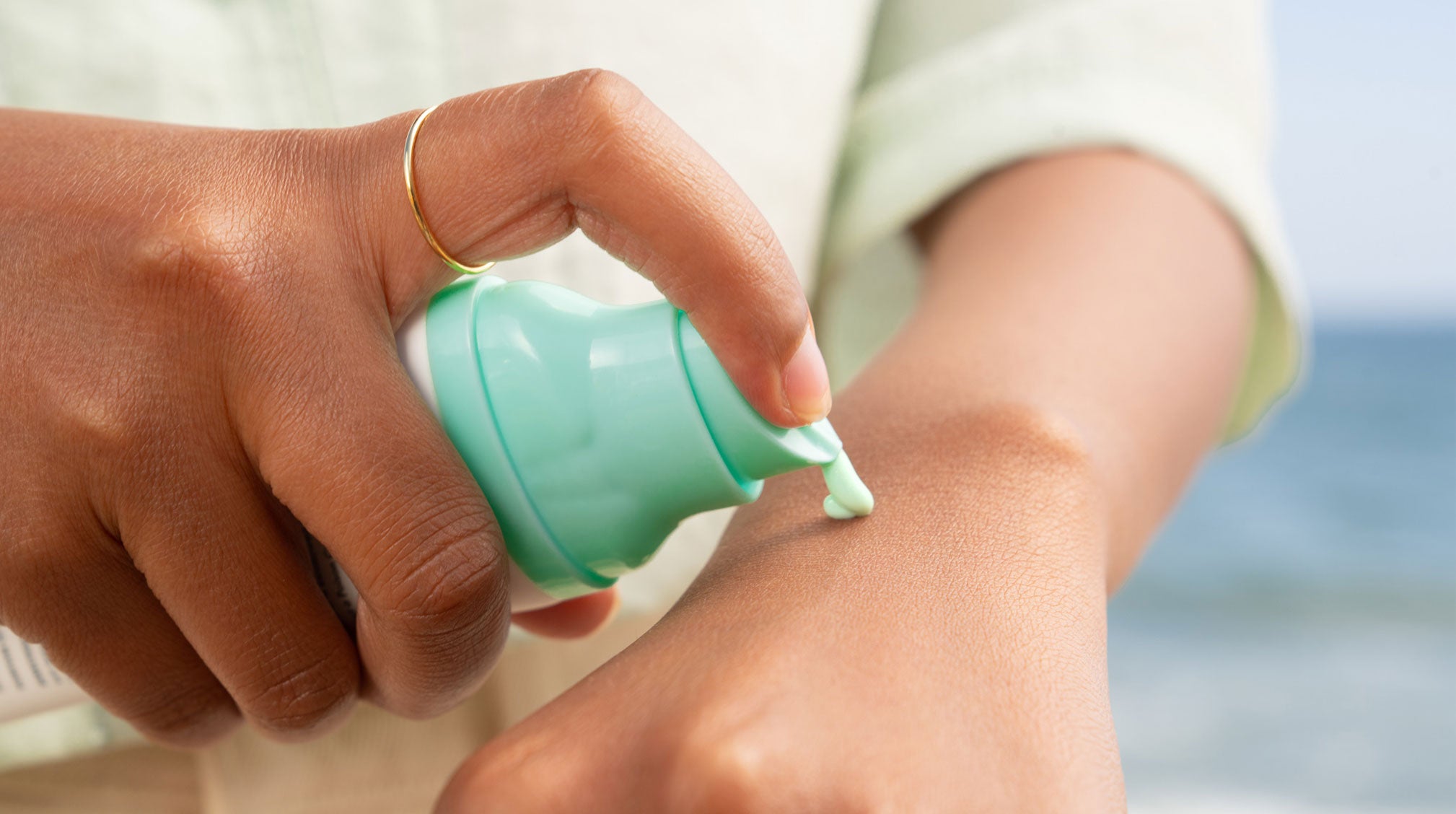
It’s summertime, and the livin’ is easy. Beach days, long bike rides, pool parties, afternoons in the park. While basking in the glorious, warm sunshine, there’s just one requirement: sunscreen. Today we’re breaking down suncare basics so you can keep those good summer vibes – and good skin – going all season long.
Why do I need sunscreen?
Many people skip sunscreen because they don’t believe they need it. But the sun doesn’t discriminate. Even if you don't see a burn or feel pain, ultraviolet (UV) rays can damage skin cells beneath the surface. In fact, it’s estimated that 80-90% of visible facial aging signs are caused by UV exposure decades before they appear. So skimping on sunscreen in your 20s will show up as wrinkles and dark spots during your 40s.

How does sunscreen work?
Sunscreens prevent the sun’s UV radiation from reaching skin cells. There are two types of UV rays: UVA rays, which deeply penetrate the skin to cause long-term damage and wrinkles, and UVB rays, which are the primary cause of surface damage like sunspots, sunburns and discoloration. While UVB can be blocked by glass, UVA can penetrate clouds and windows. UVA also has the same intensity year round, even when it’s cold outside.
An easy way to remember the difference is to associate UVA with Ultraviolet Aging and UVB with Ultraviolet Burning.

How does sunscreen work?
Sunscreens prevent the sun’s UV radiation from reaching skin cells. There are two types of UV rays: UVA rays, which deeply penetrate the skin to cause long-term damage and wrinkles, and UVB rays, which are the primary cause of surface damage like sunspots, sunburns and discoloration. While UVB can be blocked by glass, UVA can penetrate clouds and windows. UVA also has the same intensity year round, even when it’s cold outside.
An easy way to remember the difference is to associate UVA with Ultraviolet Aging and UVB with Ultraviolet Burning.
What's the best type of sunscreen?
Both physical and chemical sunscreens protect your skin, but in different ways. In physical sunscreens, the ingredients (typically zinc oxide or titanium dioxide) work by forming a layer on the skin to reflect UV rays. In chemical sunscreens, ingredients like oxybenzone, octinoxate, octisalate and avobenzone change UV radiation into heat and then release that heat away from the skin.
Last year, the FDA announced that it is gathering more data to ensure that chemical sunscreens meet all safety standards, because some chemicals (like oxybenzone) “are absorbed through the skin to a greater extent than previously understood.” However, the American Academy of Dermatology maintains that the benefits of wearing sunscreen far outweigh the risks. Plus, you can always choose physical sunscreens if you want to avoid the chemicals in question.
RELATED READ: Is Sunscreen Dangerous? Here’s What the FDA Has to Say About It
Sunscreen + Coverage = Ultimate Sun Protection
Speaking of broad spectrum protection, Superlight Sunscreen SPF 30 protects, primes and blurs skin redness with an airy light gel-cream formula. Basically, it’s everything you’ve ever wanted in a physical sunscreen (and there’s no need to worry about potentially dangerous chemicals).
If you’re swimming or sweating, dermatologists recommend reapplying sunscreen every two hours. And, if you want to go the extra mile for your skin (and who doesn’t?), covering up with clothing, umbrellas, hats and sunglasses can further decrease sun exposure. So slap on some Superlight Sunscreen, rock your finest floppy hat and keep the good vibes going. Your future skin will thank you!
[[product-ad]]


















